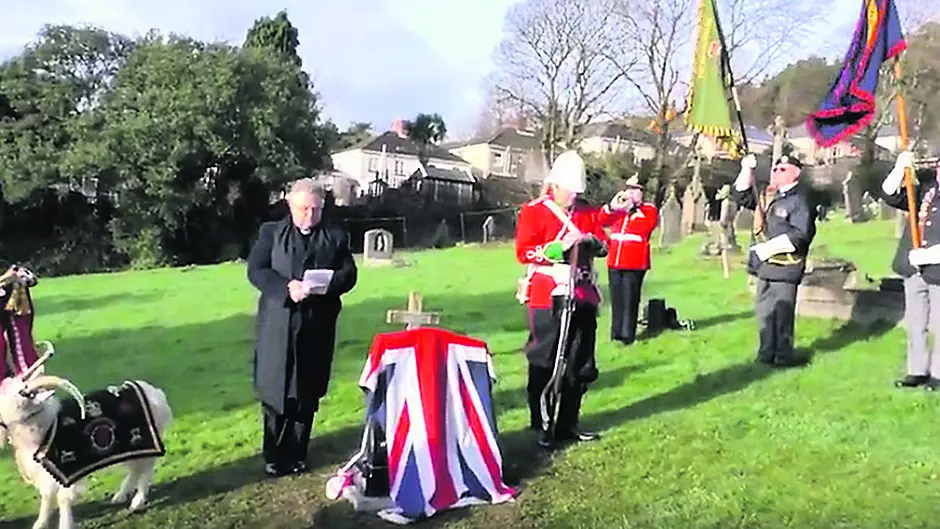A redidcation of the grave of a Castletownbere man who served in the British Army and at Rorke's Drift against the Zulus, recently took place in Wales.
A REDIDCATION of the grave of a Castletownbere man who served in the British Army and at Rorke’s Drift against the Zulus, recently took place in Wales.
Last August, the founders of a military history museum in Swansea put out a call to find the descendants of Private John Connolly, in a bit to erect a headstone on his grave.
Peter Hall and John Thomas, who own a family-run museum dedicated to documenting the area’s military history, discovered that Pte Connolly, who fought in Rorke’s Drift in Africa in 1879, was buried in an unmarked pauper’s grave at Danygraig Cemetery in Port Tennant in Swansea.
In 1879 the British 24th Regiment, later to be called the South Wales Borderers, fought a brave defence against the Zulus at Rorke’s Drift in Natal, Africa.
Pte Connolly was injured during the battle and carried to safety by Private Henry Hook.
Pte Hook was awarded a medal for his bravery. John Connolly died in 1906 and was buried in Swansea.
It is believed that Pte Connolly was born in Castletownbere in 1859 and was the son of a fisherman, also named John Connolly.
Last week a small group gathered at the grave of Pte Connolly and performed a ceremony as a new gravestone was unveiled.
The Southern Star ran a story last year on the search for Pte Connolly’s family and a Swansea-based monumental mason company Nurse and Payne heard of the story and agreed to supply and engrave a headstone free of charge.
And now, a woman in the US has come forward, having been sent The Southern Star story by a relation, and she believes she may be related to John Connolly’s father, the fisherman.
The Welsh historians are investigating the potential links.
Shenkin the goat also made an appearance at the ceremony.
The Royal Welsh, and their predecessor units, have adopted goats as mascots since the 1770s. This dates back to an incident at the Battle of Bunker Hill in 1775, during the American War of Independence. A wild goat is thought to have strayed onto the battlefield and led the Royal Welsh Fusiliers’ colour party from the field. A goat has served with the regiment ever since.








